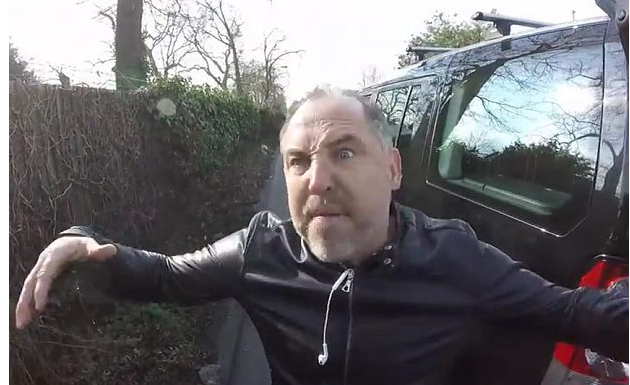“I could kill you,” screams the angry man. “Why don’t you then?” comes the reply. “Because there’s witnesses”.
This, from the ugly scene at a recent road rage incident between a motorist and a cyclist illustrates a phenomenon we’re seeing again and again, both sparking new crises for organisations and giving existing ones more media potential: the rise of video. Thing is, there’s nearly always witnesses now.
Here’s that road rage incident, in four minutes of sweary high definition, shot on a helmet mounted camera, uploaded to YouTube where 300,000 people have seen it. It was enough for social media and a smart local journalist to supposedly track down the motorist in question, and turn a moment of (pretty strong) incivility into the beginnings of a boycott campaign against a local business frequented by cyclists, who are tribal and well-connected online. Beware, the language is rather fruity.

UPDATE 31-July-2015: The video has been removed from YouTube, but you can get a flavour of it in this Telegraph piece.
What might have been a shocked customer complaint ten years ago, or a tweet two years ago, is in 2015 a public Facebook video that racks up 2m views (note to baristas: you’re being filmed too). Incredibly compact, high capacity storage, better batteries, ubiquitous phones, and in-flight wifi all combine to mean your smoke-filled aircraft cabin will hit the networks before your comms team has heard there’s a problem. You can ban film crews from filming embarrassing shots of delays and grumpy passengers in Departures, but journalists carry phones and have been trained how to use them.
The media – and now channels like Facebook – favour video over pictures, and pictures over words – because it has a gripping power. And now, with channels like Periscope or Meerkat, there’s scope for anyone to livestream incidents to an audience of thousands.
It’s a struggle to keep up, and we’re increasingly incorporating near-live eyewitness reports as well as prepared video bulletins into our crisis simulation exercises. We’re helping teams to adapt to the four truths of crisis communication in a world of broadcasters:
- Accept the normal broadcast news rules no longer apply: film crews used to look like film crews, and could be allowed into scenes or banned from them. With HD cameraphones and drones, that’s almost impossible to enforce, and a good journalist has more tools at their disposal to get the story.
- Assume everything in smartphone range could be broadcast: get your public-facing staff to default to the idea that bad behaviour will be made public, that evidence of problematic incidents can’t be suppressed, but that video gives them a chance to come across well too. We won’t all be livestreaming our jobs through body-worn cameras, thankfully.
- Update your monitoring (YouTube, Twitter for ‘|LIVE NOW|’ + your brand etc) to catch incidents with viral video potential earlier and be resourced to review footage as well as scan keywords in text
- Review your ability to respond in kind: how quickly can you publish authentic video, of a senior exec or credible spokesperson dealing with an incident which broke through online video? Would you rely on a broadcast interview with a news organisation, or do you have the in-house capacity to shoot, edit and promote a film of your own that gives your side of story?
Update 3-Jun:
A helpful reader contributes a great example of point 4 above – when an employee of supermarket chain Asda was filmed behaving badly in a storeroom and became known on YouTube as the ‘chicken licker’, the store’s own staff posted a video response which conveyed their disappointment and pride:
